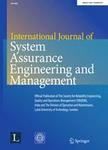版权所有:内蒙古大学图书馆 技术提供:维普资讯• 智图
内蒙古自治区呼和浩特市赛罕区大学西街235号 邮编: 010021

作者机构:North Carolina State Univ Raleigh NC 27695 USA Johns Hopkins Univ Appl Phys Lab Laurel MD 20723 USA Univ Florida Gainesville FL 32611 USA
出 版 物:《INTERNATIONAL JOURNAL OF SYSTEM ASSURANCE ENGINEERING AND MANAGEMENT》 (国际系统保证工程与管理杂志)
年 卷 期:2024年第15卷第3期
页 面:854-870页
核心收录:
学科分类:0202[经济学-应用经济学] 02[经济学] 0837[工学-安全科学与工程] 0714[理学-统计学(可授理学、经济学学位)] 0701[理学-数学]
主 题:Systems safety analysis Fault tree analysis Risk assessment Risk severity Cut set analysis
摘 要:Fault Tree Analysis (FTA) has realized substantial application for safety engineering;however, the method is not without limitations. Traditional FTA requires substantial time and effort, even for single fault assessment, and focuses solely on the probability of event occurrence without considering the severity of consequences. A constrained literature review and examination of functions available in commercial-off-the-shelf FTA software revealed current implementations to lack a structured functional approach to account for severity of intermediate events to a fault as well as severity of fault outcomes. To address this limitation, a novel Consequence Severity-Probability Importance Measure (CSPIM) is proposed as an extension of static FTA. The CSPIM approach is demonstrated through a case study comparing results to those of traditional FTA. Results from a numerical example show that the CSPIM approach effectively prioritizes risky events for safety controls by taking into account both the likelihood and severity of consequences. The CSPIM algorithm calculates a composite risk value and importance of fault tree initiators, revealing those initiators that pose serious risk and should be the focal point for control measures. This approach provides a higher resolution solution than traditional FTA.